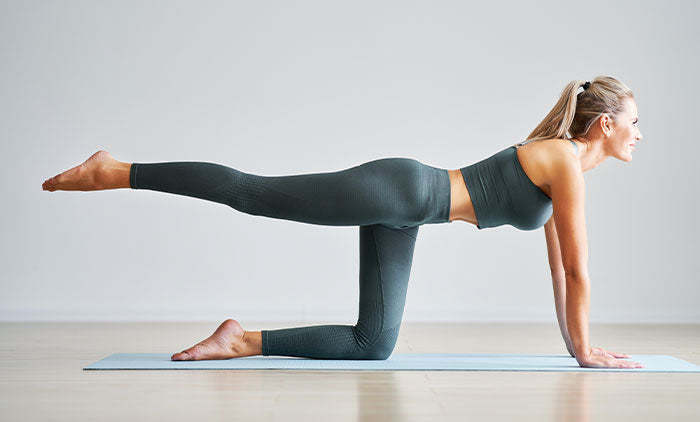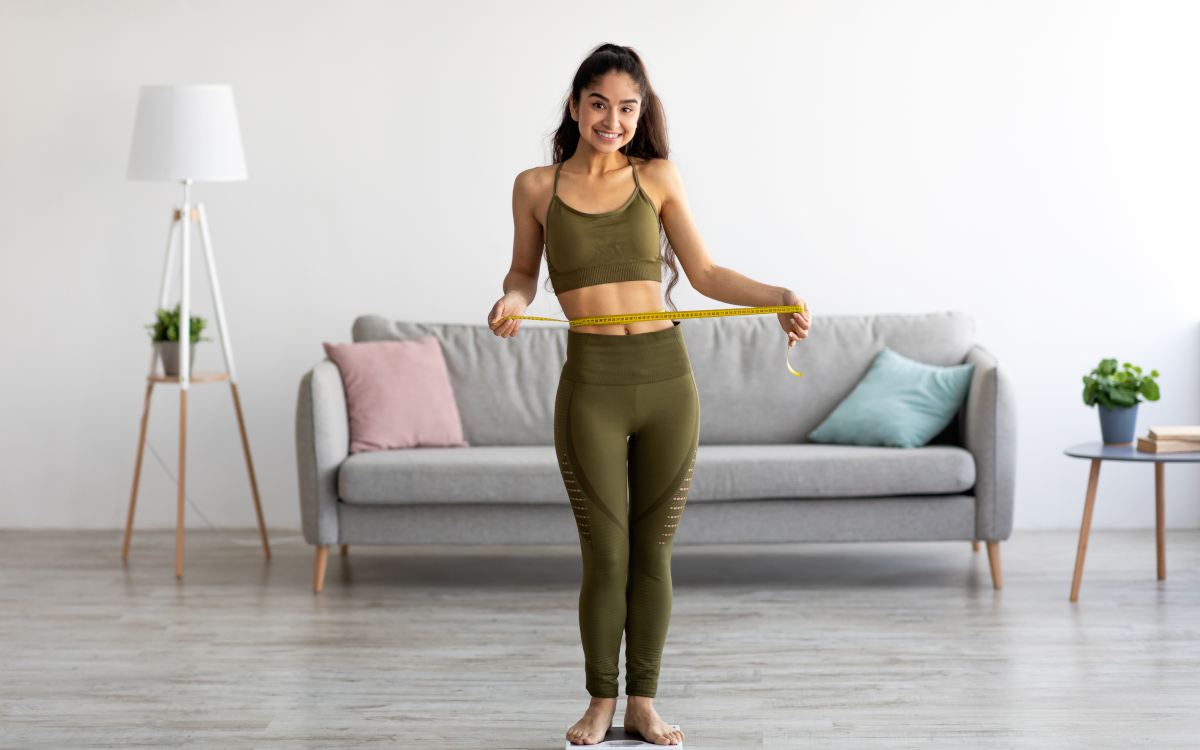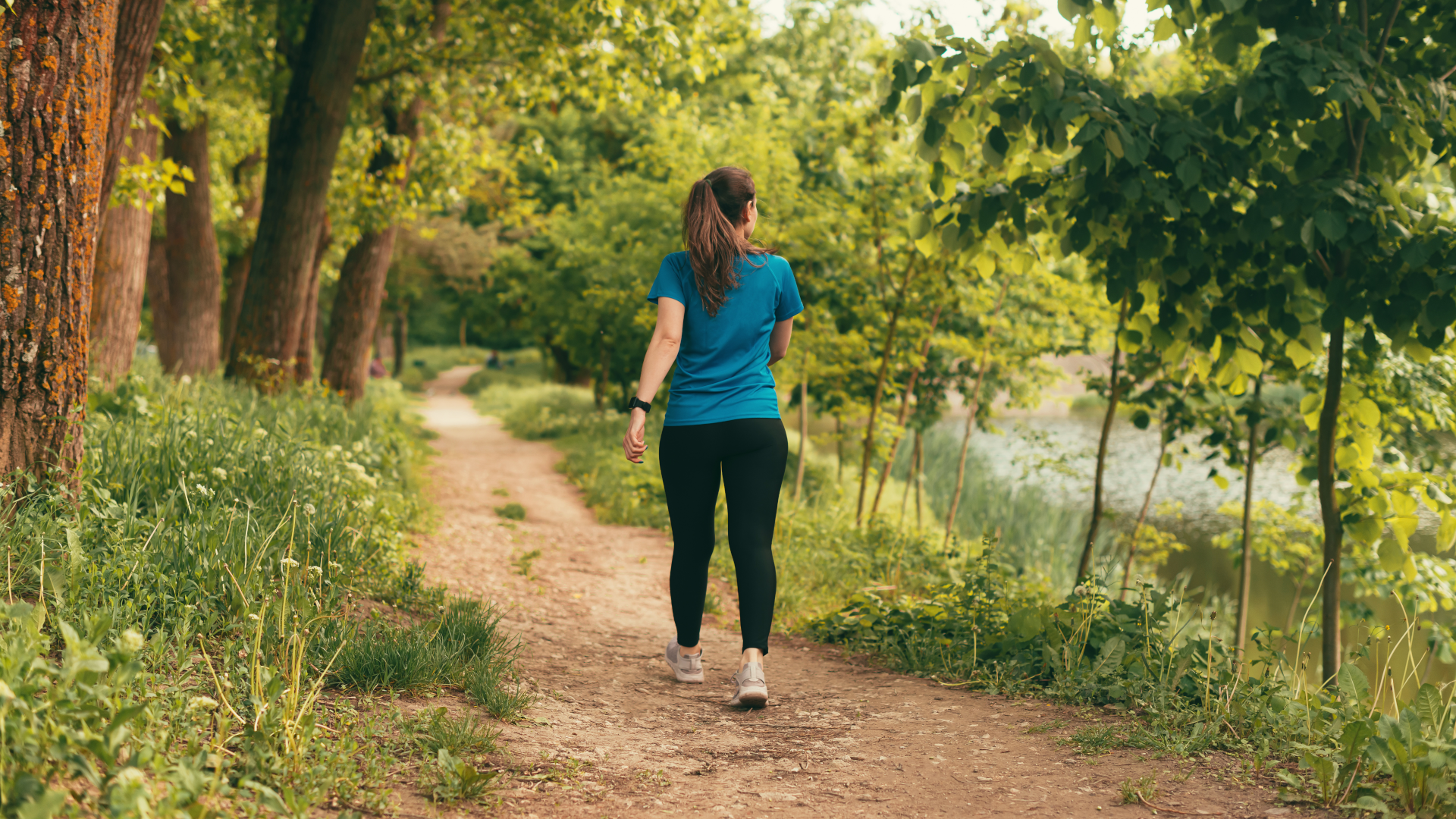Things you’ll learn in this blog |
Ouch, painful joints are no fun!
Not only can it make exercising (and life) difficult, but it might derail your attempts to stay fit and healthy.
When your joints hurt it’s easy to lounge on the couch and assume that some rest will help them recover.
But, that’s not always the case…
In fact, some low-impact and regular exercise can help ease and prevent future joint pain.
In this blog, we’ll explore some exercises to help relieve joint pain, so that you can work towards your health and fitness goals.
Why do my joints hurt?
If you’ve got painful knees, ankles, wrists, or even toes you’ll know how difficult it can be - and it can happen for a number of reasons.
Your joint pain could be due to injury, overuse, or even arthritis (it’s not just older people who get arthritis in their joints).
Sometimes joint pain in one area could have very little to do with that area at all. Your whole body is connected and pain in one area could indicate an imbalance or weakness in another.
So if you’re experiencing joint pain then your first step should be to consult a Doctor or a relevant specialist like an osteopath or podiatrist. This will help you figure out whether your joint pain is down to normal circumstances (eg. aging), overuse or injury.
And once you know that you can figure out a safe exercise (or resting) plan to help you stick to your fitness goals.
Read: HIT vs LISS training: what’s the difference?
Can you exercise with painful joints?

Should you exercise when you have joint pain?
To answer that, you’ll need to figure out why the joint is painful. This is why we recommend speaking to a healthcare professional before making any decisions on exercise.
If it’s acute pain you might be advised to rest it to let it heal or to consult with a physical therapist.
But, for the purpose of this blog let’s assume that your joint pain is chronic and long-term and that you’re looking for ways to keep moving that will also relieve the pain.
If this is the case then yes, it’s safe to do regular and low-impact exercises that will strengthen and stretch the joints and surrounding muscles.
In fact, regular exercise is very much recommended by specialists to ensure your muscles and joints stay healthy as you age. In some countries, weight training is prescribed to help fight bone conditions such as osteoarthritis.
So, if you can, exercise is a good treatment and preventative plan for joint pain.
What are the best exercises for joint pain?
The best exercises for joint pain involve moving the joint through its natural range without too much excess load.
The aim is to get the blood flowing through the joint by keeping it moving. This will include things such as
- Bodyweight exercises
- Light weights
- Yoga and Pilates
- Walking
If you’re a fan of cardio, avoid anything that puts a lot of sudden pressure on a particular joint. However, swimming, cycling, rowing machine, and walking will help you keep moving without joint pain.
Remember, always listen to your body, and if something starts to hurt stop and seek advice from an expert.
Now let’s look at some specific exercises that will help with joint pain in different parts of your body.
The best exercises to relieve back pain
There are so many joints in the back, hips, and pelvis, so it’s no wonder it’s one of the most common areas to get joint pain. In fact, over 80% of people will experience back pain at some point in their life.
It can be tempting to stretch, and toe-touch when you have a sore back, but this might actually over-extend and put pressure on your disks and ligaments.
Although it might seem counterintuitive, back pain is oftentimes caused by tight or weak, core, glutes, or hamstrings. Some of the best exercises to relieve back pain help strengthen and stretch those muscles.
Leg & Core exercises to reduce back pain…
-
Planks: You can do these on your hand, or on your forearms. The aim is to keep your hips, legs, and core in a straight line while squeezing your core and glute muscles. Make sure you don’t let your back sag to the floor as this could cause further back problems. Try and hold it for 10-seconds then work up to a minute over time.

-
Crunches: these are one of the most widely used exercises to strengthen core muscles. Lie back, bend your knees, cross your arms over your chest and lift your shoulders off the ground, while keeping your lower back pinned to the floor. Don’t try and sit all the way up, and only move as far as is comfortable for your back.

-
Cat-cow: this popular yoga pose helps to stretch and strengthen your core and back muscles. On all fours, imagine someone is pulling you back up towards the ceiling with a string, til your back is arched as far as possible. Then reverse the movement and push your belly button to the ground.

-
Glute bridge: Lie on your back with your knees bent at a 90-degree angle, and feet flat on the floor. Squeeze your stomach muscles, and lift your bottom off the floor.
Don’t overarch your back, just try to create a straight line from your knees to your hips.

-
Childs pose: being on all fours, then reach your arms forward as you sit your bottom back onto your heels. Your head and chest should drop towards the floor as your arms stretch in front of you - hold before releasing the stretch.

The best exercises to relieve neck pain…

If you spend the whole day sitting at your laptop, or haunched over your phone the chances are you’ll have some neck pain at some point.
It can be a tricky area to loosen up without some professional massage help, but there are some stretches that will help loosen the muscles and relieve pain.
Neck exercises to reduce back pain…
- Chin to chest: slowly bring your chin down towards your chest and hold it to stretch
- Ear to shoulder: slowly move your head sideways til your ear is as close to the shoulder as possible and hold, then repeat on the other side.
- Shoulder crossbody: straighten one arm and cross over your chest. Bend the other arm around the straight arm and pull it toward you gently til you feel a stretch. Hold and then repeat on the other side.
The best exercises to relieve knee pain…
Ouch, painful knees can really get in the way of exercising. And with aging, they are one of the body parts that can feel pressure.
The key to exercising with sore knees is to reduce the pressure that you put on them through repetitive movements.
This means that things like running on concrete are out of the question til your knees are better. However, you can adapt your cardio and cycle, swim, and even do weights if you are cautious.
Good technique is extra important when you’ve got sore knees, so take time to set your bike up properly or get into a good squat stance. If you’re doing weighs, use lighter loads (this is not the time to aim for a PB!) Fixed weight machines and fixed cardio like bike and rower will help your knees stay in alignment.
Knees are one thing that can feel the impact if other parts of your body aren’t functioning or being supported properly ie. if you are wearing the wrong shoes. So it is worth speaking to a professional if you are having continued knee pain to figure out what is causing it.
The best exercises to relieve wrist pain…

The little bones in the wrists can often get overworked by keyboards, phones, and swiping screens. You can do some lovely exercises to ease joint pain in your wrists.
If you can, get on your hands and knees in a tabletop position. Turn your hands so your fingers are pointing outwards to the left and right. Gently rock and stretch your wrists.
If you have mobility, you can even turn your hands so fingers point towards you (go carefully!)
From a sitting position, you can also interlace your fingers and make circles with your wrists.
How do I stop my joints from hurting when I exercise?
While it might be tempting to not do any exercise in order to prevent joint pain, the opposite might in fact be true.
Regular, controlled exercise performed in the correct way can strengthen the muscles and surrounding joints and prevent pain, and aid recovery.
The key is ensuring that you are performing exercises correctly, in control, and supporting your body in its recovery.
Remember if you feel any usual or continuous pain then consults a professional, and figure out the best course of treatment that will allow you to exercise toward your fitness and weight loss goals.




